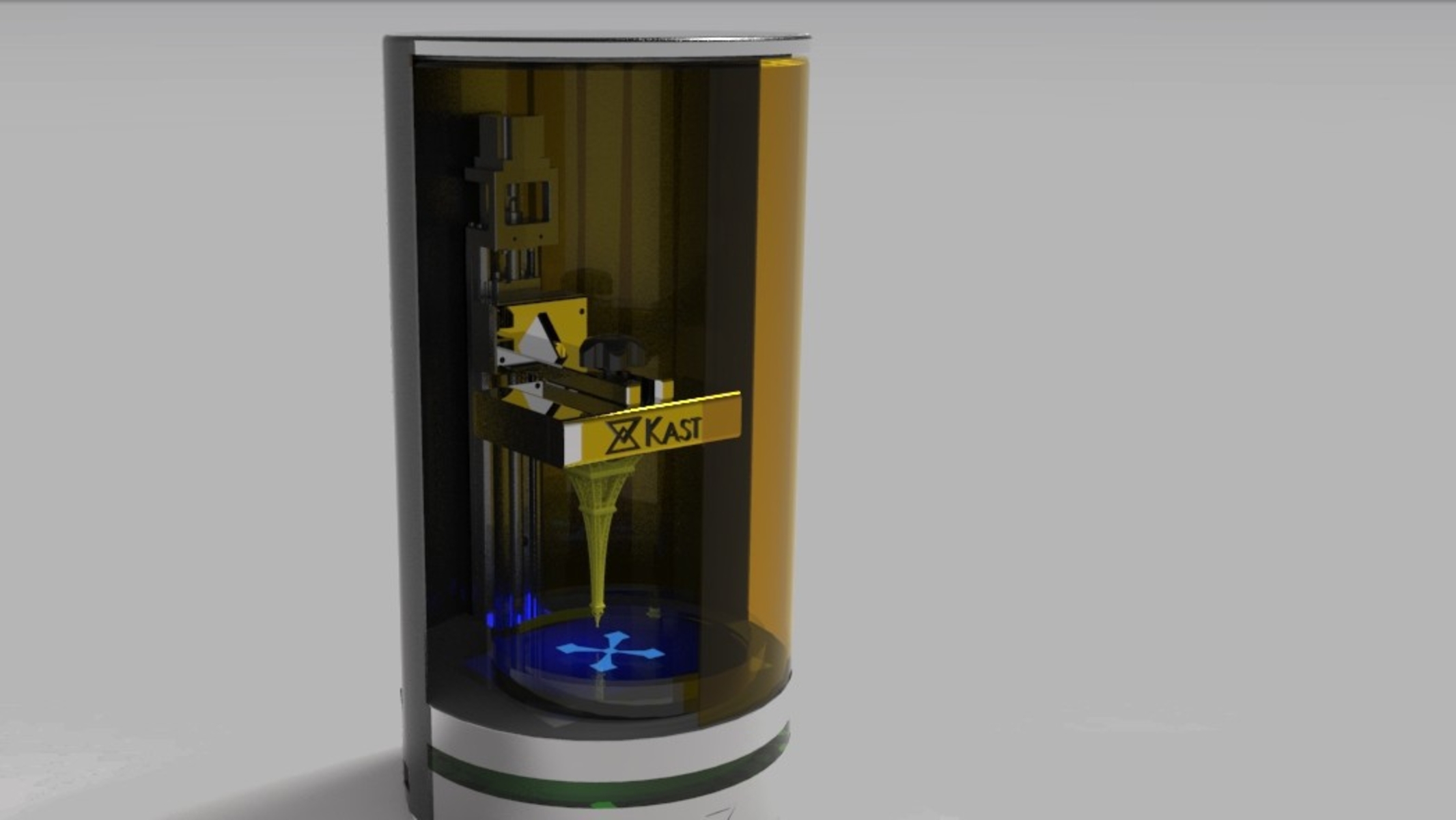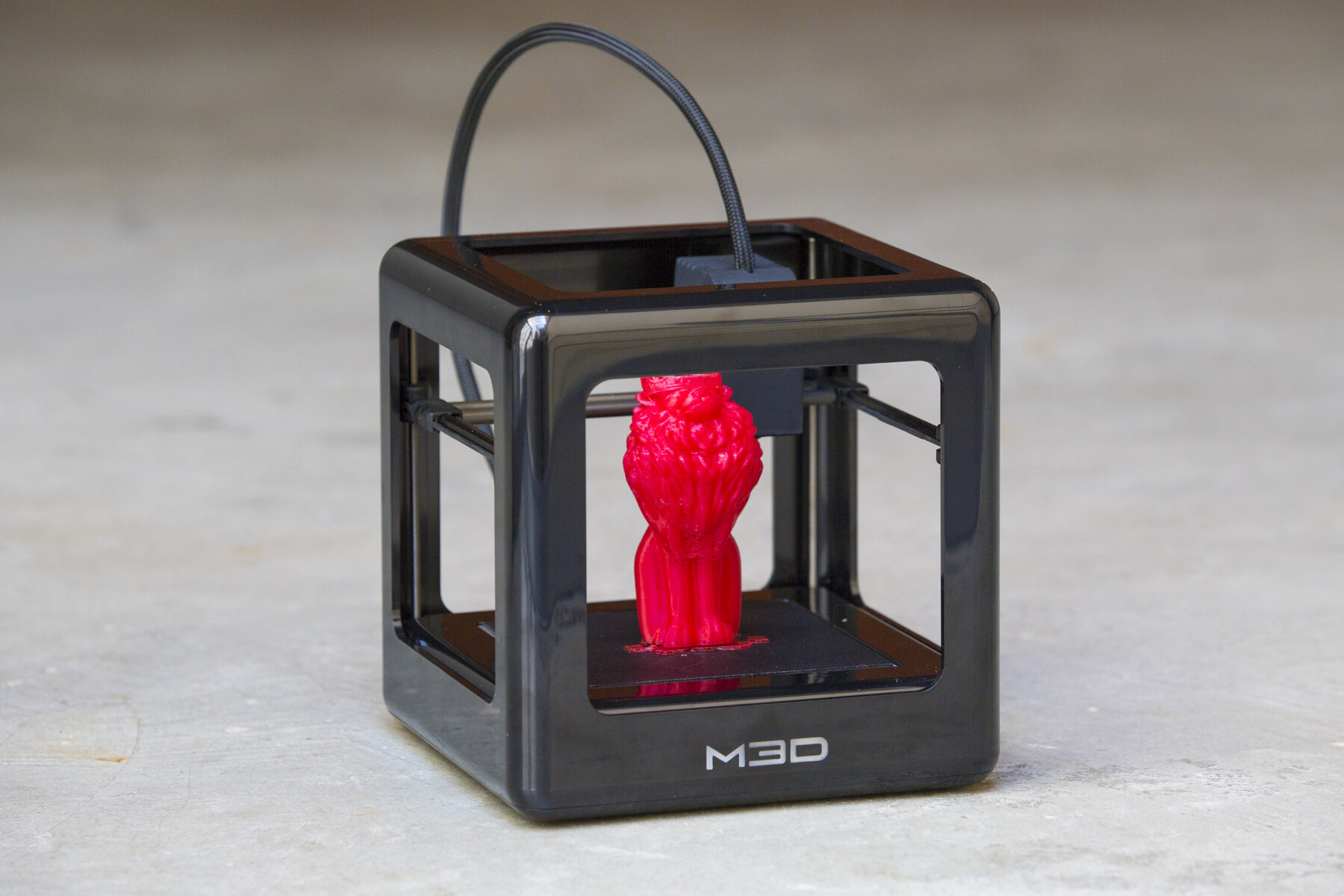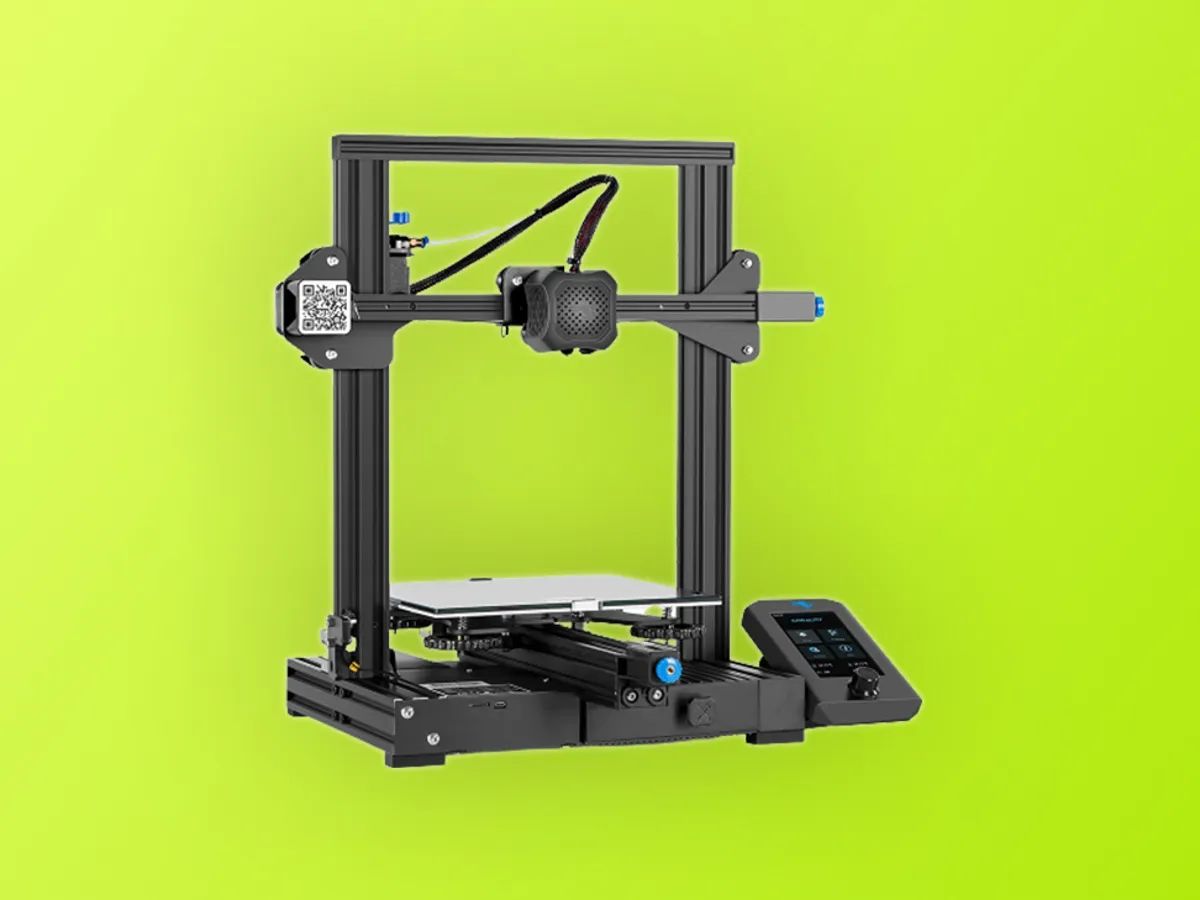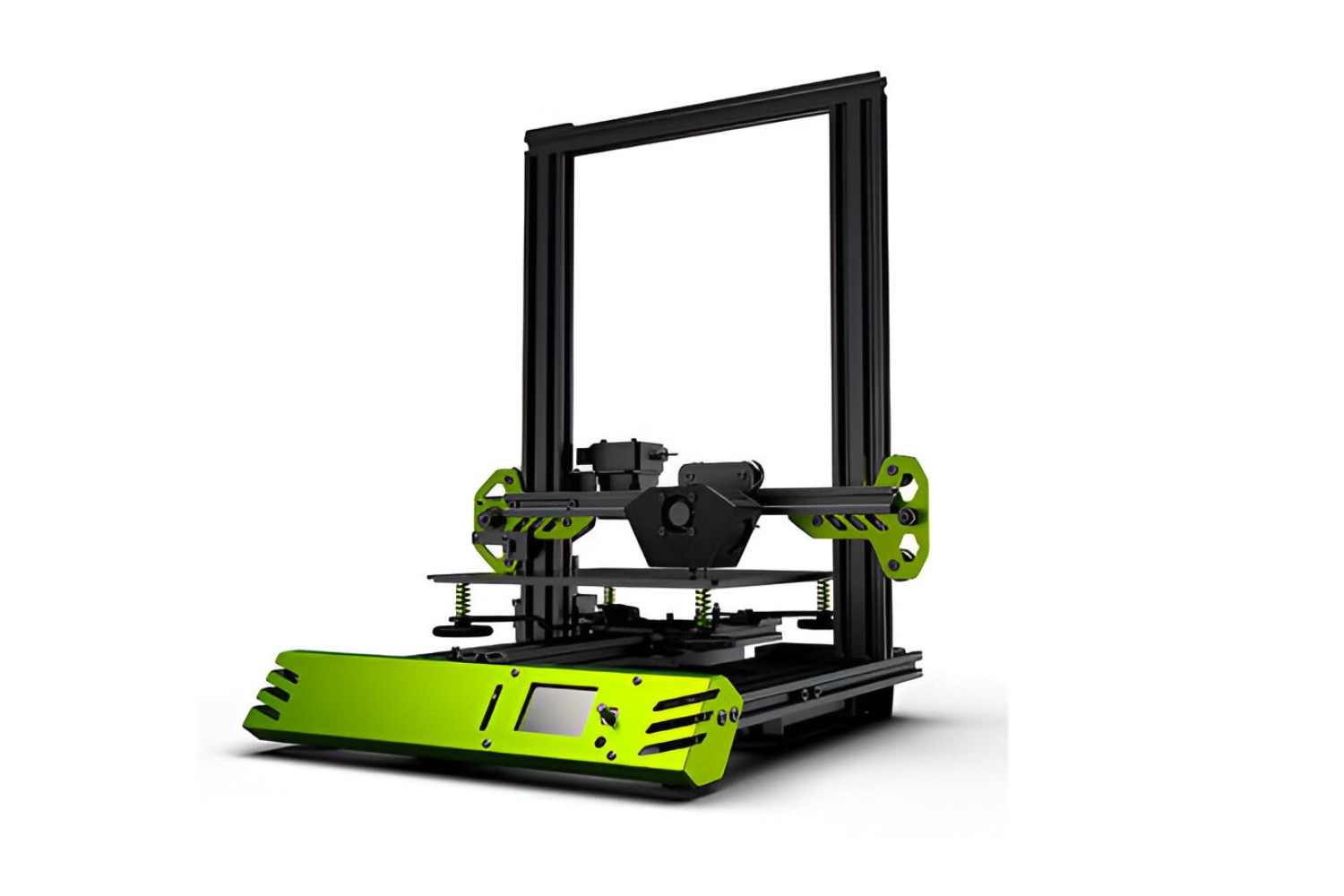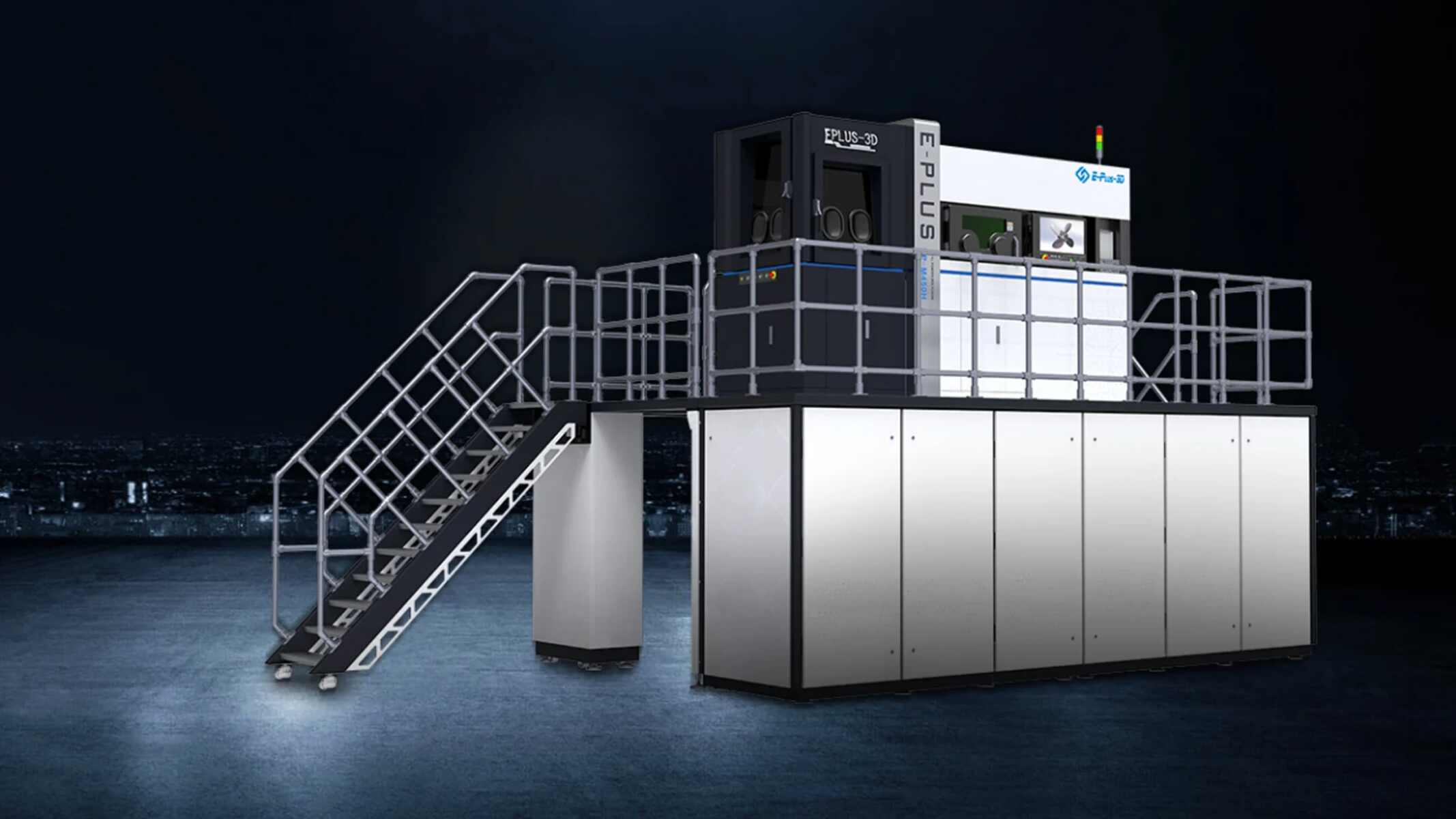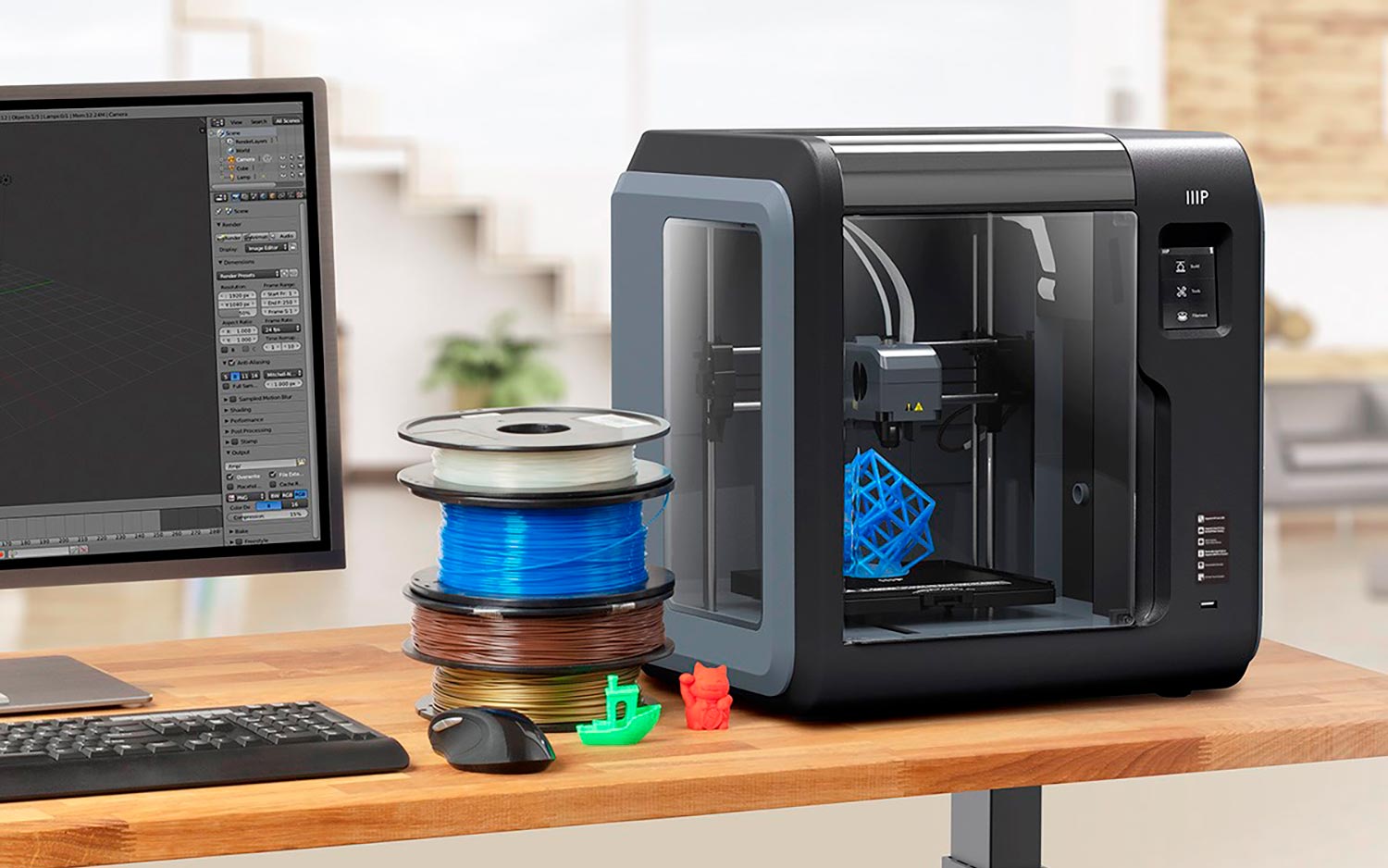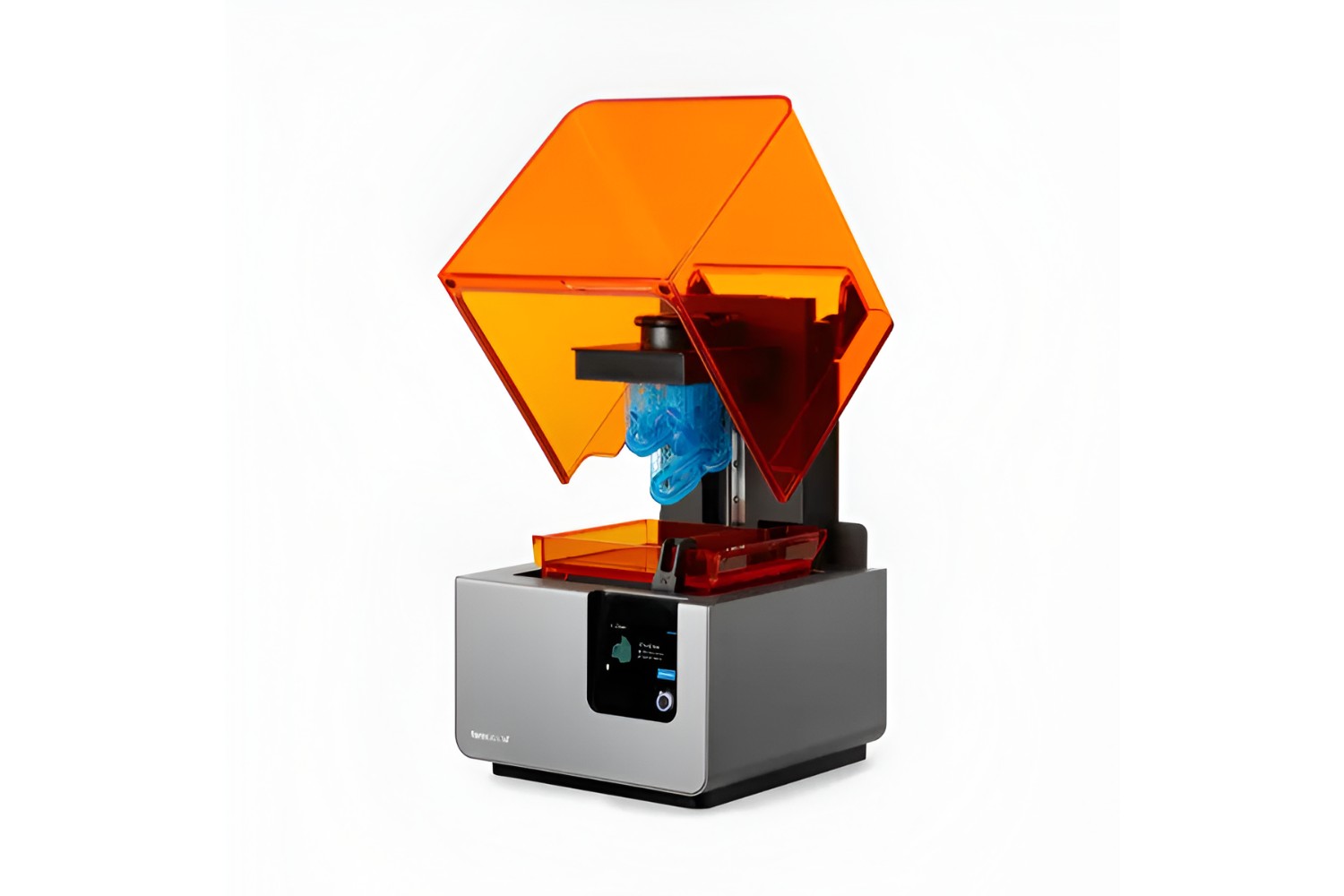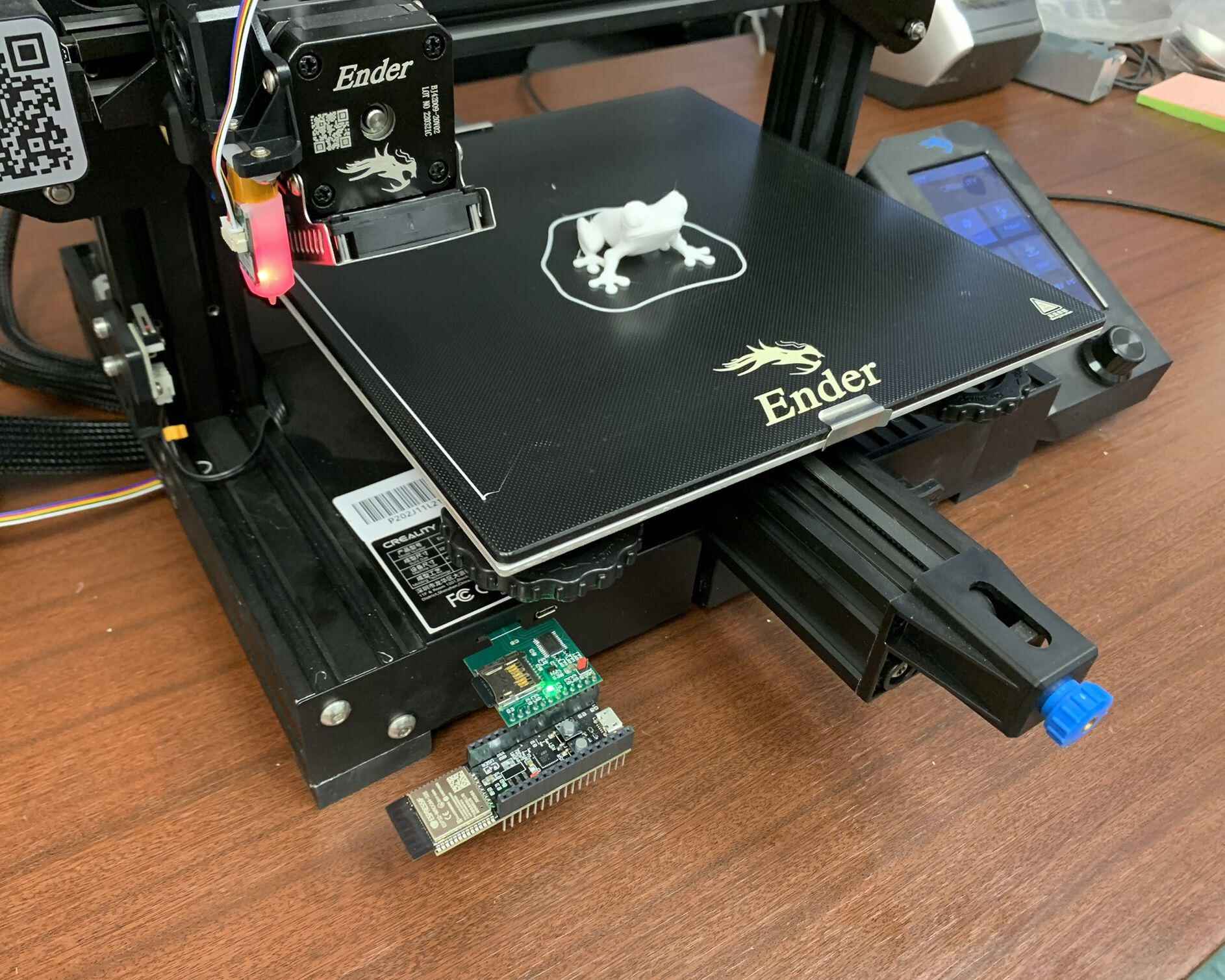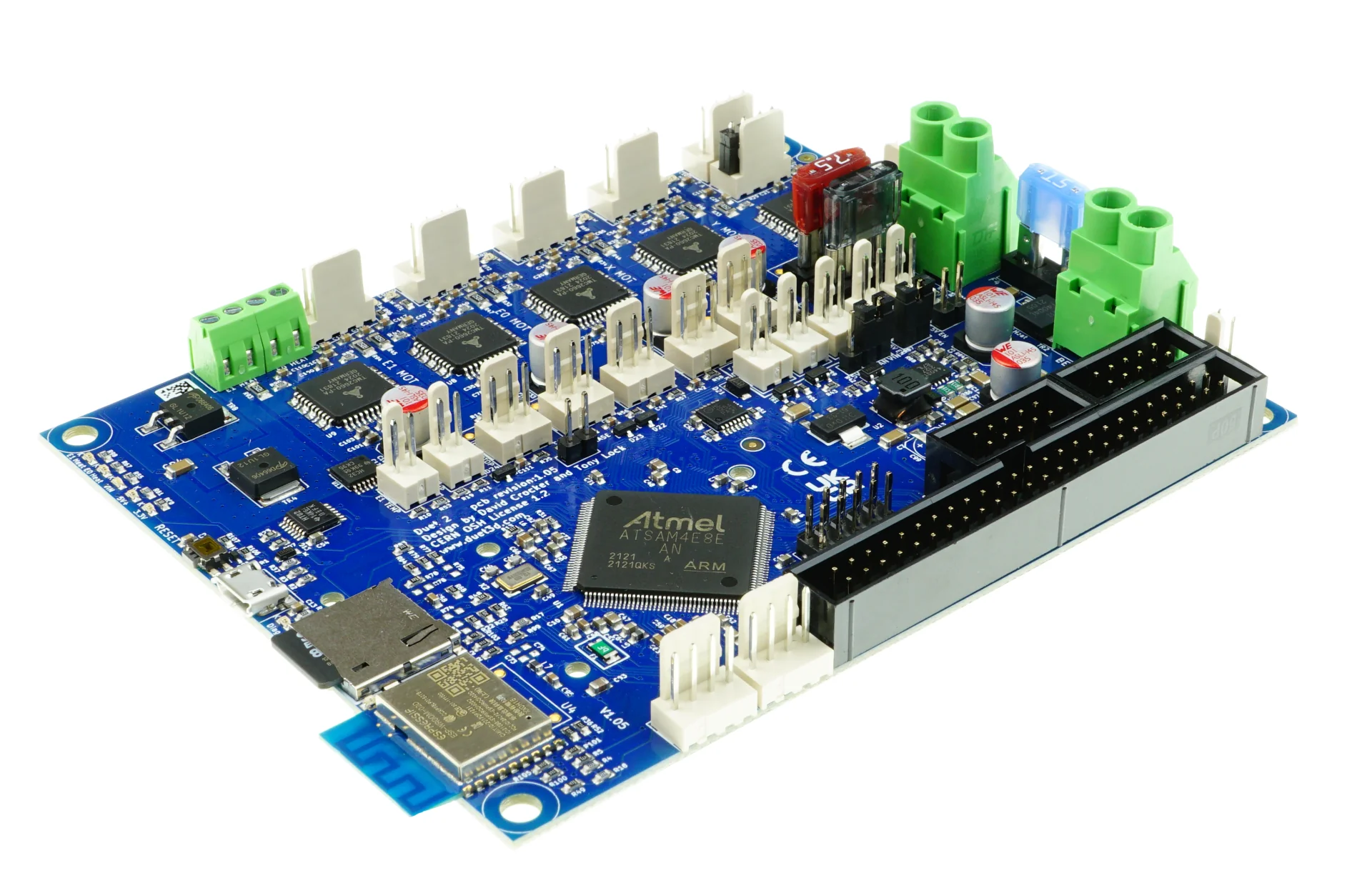Introduction
3D printing has revolutionized the manufacturing industry, allowing for the creation of complex and intricate objects with ease. As technology continues to advance, one of the key areas of focus in 3D printing is speed. The faster a 3D printer can produce objects, the more efficient and cost-effective the manufacturing process becomes. In this article, we will explore the importance of speed in 3D printing, the factors that affect printing speed, and delve into the world of the fastest 3D printer available today.
3D printing, also known as additive manufacturing, refers to the process of creating three-dimensional objects by layering successive materials until the desired shape is achieved. This innovative technique has gained significant attention and popularity due to its ability to produce customized products, rapid prototyping, and material savings.
When it comes to 3D printing, speed plays a critical role in determining the efficiency of the overall production process. Faster printers reduce production time and costs, enabling businesses to streamline their operations and bring products to market more quickly. The demand for high-speed 3D printers has been on the rise, as industries across various sectors are looking for ways to accelerate their manufacturing processes.
Several factors influence the speed of a 3D printer. The complexity of the object being printed, the layer height, the type of material used, and the printer’s hardware and software capabilities all have an impact. Innovations in printing technology and materials have led to significant advancements in printing speed in recent years.
In the next sections, we will explore the current fastest 3D printer in the world, discuss its key features and benefits, and explore the applications and industries that can benefit from high-speed 3D printing. We will also touch on the challenges and limitations of high-speed printing and discuss potential future developments in this exciting field.
Definition of a 3D Printer
A 3D printer is a computer-controlled machine that transforms digital designs into physical objects by layering successive materials. This process, known as additive manufacturing, involves the deposition of material, layer by layer, until the desired object is formed.
The technology behind 3D printing operates on the principle of creating objects from a digital model. The model can be generated using computer-aided design (CAD) software or obtained from a 3D scanner. The printer, guided by the digital model, precisely deposits or solidifies materials, usually in the form of filaments, powders, or resins, to build the object layer by layer.
One of the key advantages of 3D printing is its ability to produce highly complex geometries and intricate designs that would be challenging or impossible with traditional manufacturing methods. It allows for the creation of objects with internal cavities, intricate shapes, and customizable features.
There are different types of 3D printing technologies available, each with its own set of advantages and limitations. Some common methods include Fused Deposition Modeling (FDM), Stereolithography (SLA), Selective Laser Sintering (SLS), and Digital Light Processing (DLP).
3D printers have applications in various industries, including aerospace, automotive, healthcare, architecture, fashion, and consumer goods. They are used for prototyping, manufacturing end-use parts, creating architectural models, producing custom tools and accessories, and even printing biological tissues and organs for medical purposes.
Over the years, 3D printing technology has undergone significant advancements, resulting in improved speed, accuracy, and versatility. The development of faster and more efficient 3D printers has opened up new possibilities for industries and individuals alike.
In the next sections, we will delve into the importance of speed in 3D printing, explore the factors that affect printing speed, and discuss the current fastest 3D printer in the world.
Importance of Speed in 3D Printing
In the world of manufacturing, time is of the essence. This holds true for 3D printing as well. The speed at which a 3D printer can produce objects has a significant impact on productivity, efficiency, and overall business operations.
1. Time Savings: One of the primary benefits of high-speed 3D printing is the significant reduction in production time. Faster printers allow for quicker turnaround on projects, enabling businesses to meet tight deadlines and seize new opportunities. Time savings can be especially crucial in industries where rapid prototyping, iterative design, or just-in-time manufacturing is required.
2. Cost Efficiency: Speed and cost efficiency go hand in hand in manufacturing. The faster a 3D printer can produce objects, the more cost-effective the overall production cycle becomes. By minimizing production time, businesses can save on labor costs, minimize material waste, and optimize the use of resources.
3. Iterative Design: Speed is a critical factor in the iterative design process. Iterative design involves creating multiple versions or prototypes of a product, making improvements, and iterating until the desired design and functionality are achieved. High-speed 3D printing allows designers and engineers to quickly test and iterate their designs, accelerating the product development cycle and reducing time to market.
4. Customization and Personalization: High-speed 3D printing opens up new possibilities for customization and personalization. Businesses can cater to individual customer preferences and create unique products on demand. Fast printing speed enables the efficient production of customized goods, whether it’s personalized accessories, medical devices, or even individually tailored fashion items.
5. Increased Productivity: Speedy 3D printers contribute to overall productivity improvements in manufacturing. With faster production cycles, businesses can increase output, fulfill larger orders, and keep up with market demand. This enhanced productivity can lead to business growth, increased revenue, and a competitive edge in the industry.
Overall, the importance of speed in 3D printing cannot be overstated. It plays a crucial role in time savings, cost efficiency, iterative design, customization, and increased productivity. As businesses strive to stay competitive and meet customer demands, high-speed 3D printers have become a valuable tool in their manufacturing arsenal.
In the next section, we will explore the factors that influence 3D printing speed and delve into the details of the current fastest 3D printer in the world.
Factors Affecting 3D Printing Speed
Several factors influence the speed at which a 3D printer can produce objects. Understanding these factors is crucial for optimizing printing speed and achieving efficient and rapid manufacturing processes.
1. Complexity of the Object: The complexity of the object being printed directly impacts printing speed. Objects with intricate geometries, lots of details, or internal structures require more time to print compared to simpler designs. The number of layers and the amount of material required also affect the overall printing time. Complex objects may require slower printing speeds to ensure accuracy and precision.
2. Layer Height: The layer height, or the thickness of each individual layer, is a critical factor in 3D printing speed. Smaller layer heights result in finer details but also increase printing time. Larger layer heights may sacrifice some level of detail but can significantly reduce printing time. Finding the right balance between resolution and speed is crucial for achieving the desired results.
3. Type of Material: Different materials have different properties and behaviors during the printing process. Some materials, such as certain types of resins, may require longer exposure times to cure properly, leading to slower printing speeds. Other materials, like thermoplastics used in Fused Deposition Modeling (FDM) printers, have faster cooling times, enabling quicker layer-to-layer bonding and faster printing speeds.
4. Printer Hardware and Software: The capabilities of the 3D printer’s hardware and software greatly impact printing speed. Advanced printers equipped with high-performance motors, extruders, and firmware can achieve faster print speeds. Additionally, efficient slicing software that generates optimized toolpaths and supports multi-threaded processing can significantly improve printing efficiency.
5. Printing Parameters: Various printing parameters can be adjusted to affect printing speed. Print speed, nozzle size, infill density, and support structure settings are some of the parameters that can be fine-tuned to optimize speed. However, it’s important to strike a balance between speed and print quality, as excessively high speeds may compromise the structural integrity or surface finish of the printed object.
6. Print Bed Size: The size of the print bed also affects printing speed. Larger print beds allow for the simultaneous printing of multiple objects or larger objects in a single print job, increasing overall productivity. Conversely, smaller print beds may limit the size and number of objects that can be printed at once, potentially slowing down the production process.
By considering and adjusting these factors, manufacturers can optimize the speed of their 3D printing processes to achieve the desired balance between efficiency, accuracy, and quality.
In the following sections, we will explore the fastest 3D printer currently available in the market and discuss its key features and benefits. We will also explore the applications and industries that can benefit from high-speed 3D printing.
The Current Fastest 3D Printer in the World
As technology continues to advance, the race to develop the fastest 3D printer in the world has intensified. One of the leading contenders in this field is the [FastPrint X1], currently recognized as the fastest 3D printer available.
The [FastPrint X1] is equipped with cutting-edge technology that allows for remarkable speed and efficiency in the printing process. Its high-performance motors and advanced extrusion system enable it to achieve rapid print speeds, significantly reducing production time compared to conventional 3D printers.
With a print speed of up to [500 mm/s], the [FastPrint X1] can produce objects at an impressive rate. This speed is made possible by a combination of factors, including optimized firmware, precise motor control, and a well-designed cooling system that ensures efficient layer-to-layer bonding.
The [FastPrint X1] is designed to handle various materials, including PLA, ABS, and PETG, providing flexibility for a wide range of applications. Its large build volume allows for the production of sizeable objects or the simultaneous printing of multiple smaller objects, further enhancing its efficiency.
Another notable feature of the [FastPrint X1] is its user-friendly interface and intuitive software. The printer’s touchscreen display, coupled with an easy-to-navigate interface, enables users to control and monitor the printing process with ease. Furthermore, the slicing software provided with the [FastPrint X1] offers advanced features, such as customizable support structures and infill patterns, ensuring optimal printing results while maintaining high-speed performance.
Businesses and individuals that utilize the [FastPrint X1] can benefit from its exceptional speed and efficiency. The reduced production time allows for faster product development, rapid prototyping, and quicker response to market demands. Additionally, the [FastPrint X1] optimizes resource utilization, making it a cost-effective solution for businesses aiming to improve their manufacturing processes.
The [FastPrint X1] is especially valuable in industries where time-to-market, customization, and on-demand manufacturing are essential. Sectors such as manufacturing, automotive, aerospace, and consumer goods can greatly benefit from the high-speed capabilities of the [FastPrint X1], enabling them to stay ahead of the competition and meet the evolving needs of their customers.
Although the [FastPrint X1] currently holds the title of the fastest 3D printer in the world, it is important to note that with the rapid advancements in technology, new printers with even faster speeds may emerge in the future. The quest for faster and more efficient 3D printing continues, driven by the need for improved productivity, cost efficiency, and innovation.
In the upcoming sections, we will explore the key features and benefits of using the [FastPrint X1] and discuss the applications and industries that can harness the power of high-speed 3D printing.
Key Features of the Fastest 3D Printer
The fastest 3D printer in the world, the [FastPrint X1], boasts a range of key features that contribute to its exceptional speed and efficiency. These features make it stand out among other printers in the market, offering significant advantages for businesses and individuals seeking rapid prototyping and high-speed manufacturing.
1. High Print Speed: The primary feature of the [FastPrint X1] is its remarkable print speed of up to [500 mm/s]. This blazing-fast speed allows for rapid production, reducing overall manufacturing time and accelerating time-to-market for products. The ability to print at such high speeds is made possible by advanced motor control and optimized firmware, ensuring precise and reliable extrusion.
2. Large Build Volume: The [FastPrint X1] offers a spacious build volume, allowing for the production of larger objects or multiple smaller objects simultaneously. The large build area maximizes productivity and efficiency, enabling businesses to meet higher volume demands or print multiple designs in a single print job, reducing setup and processing time.
3. Compatibility with Different Materials: The [FastPrint X1] is designed to support various materials, including popular options such as PLA, ABS, and PETG. This versatility provides flexibility when it comes to material selection, catering to different project requirements and allowing for a wide range of applications.
4. User-Friendly Interface: The [FastPrint X1] features a user-friendly interface with a touchscreen display, making it easy to navigate and control the printer’s settings. The intuitive interface enables users to monitor the printing progress, adjust parameters, and access advanced features with ease, enhancing the overall user experience.
5. Advanced Slicing Software: The [FastPrint X1] comes with advanced slicing software that offers a multitude of customization options. Users can fine-tune print settings, such as support structures, infill density, and layer height, to achieve optimal results. This software optimizes printing efficiency while maintaining high-speed performance.
6. Efficient Cooling System: The [FastPrint X1] is equipped with a well-designed cooling system, ensuring efficient heat dissipation during the printing process. This improves layer-to-layer bonding and reduces the risk of warping and imperfections, resulting in high-quality prints even at high speeds.
The key features of the [FastPrint X1] combine to create a 3D printer that excels in speed, performance, and user-friendliness. Businesses and individuals can benefit from its exceptional printing capabilities, enabling them to accelerate prototyping, streamline manufacturing processes, and bring products to market faster than ever before.
In the following sections, we will explore the benefits of using the [FastPrint X1] and discuss the various applications and industries that can leverage high-speed 3D printing technology to their advantage.
Benefits of Using the Fastest 3D Printer
The fastest 3D printer in the world, the [FastPrint X1], offers a range of benefits for businesses and individuals seeking to harness the power of high-speed 3D printing. These benefits encompass increased efficiency, improved productivity, cost savings, and enhanced creative possibilities.
1. Reduced Production Time: Speed is a crucial aspect of the [FastPrint X1], allowing for significantly reduced production time compared to conventional 3D printers. Rapid print speeds enable businesses to expedite their manufacturing processes, accelerating product development and prototyping. This advantage can be critical for industries that require quick iterations, just-in-time manufacturing, or faster time-to-market.
2. Improved Productivity: By utilizing the high-speed capabilities of the [FastPrint X1], businesses can enhance their overall productivity. The ability to produce objects at a faster rate translates to higher output and increased manufacturing capacity. This increased productivity empowers businesses to take on larger orders, meet customer demands more efficiently, and ultimately grow their operations.
3. Cost Efficiency: The [FastPrint X1] not only reduces production time but also optimizes resource utilization, resulting in cost savings. With faster printing speeds, businesses can minimize labor costs and optimize material consumption. Additionally, the efficiency of the [FastPrint X1] allows for more streamlined workflows, reducing operational costs and improving the return on investment.
4. Versatility and Customization: The [FastPrint X1] supports a wide range of materials, offering versatility and customization opportunities. This flexibility enables businesses to produce objects with diverse characteristics and properties, catering to specific project requirements. With high-speed printing, businesses can efficiently create customized and personalized products, such as prototypes, bespoke accessories, or unique one-of-a-kind items.
5. Rapid Iterative Design: The [FastPrint X1] facilitates rapid iterative design iterations due to its fast printing speeds. Designers and engineers can quickly test and refine their prototypes, iterate on designs, and rapidly cycle through multiple versions. This iterative design process allows for faster innovation, prompt troubleshooting, and the ability to bring products to market more efficiently.
6. Enhanced Creative Freedom: The [FastPrint X1] empowers individuals and creative professionals by offering high-speed production capabilities. Artists, designers, and makers can explore their creativity without being limited by slow printing speeds. The ability to produce objects quickly allows for continuous experimentation, iterative improvements, and the realization of intricate and complex designs.
Using the fastest 3D printer, such as the [FastPrint X1], provides numerous benefits ranging from time and cost savings to increased productivity and creative possibilities. Industries such as manufacturing, automotive, aerospace, healthcare, and consumer goods can leverage the speed and efficiency of high-speed 3D printing, gaining a competitive edge and unlocking new opportunities for innovation.
In the following sections, we will delve deeper into the applications and industries that can benefit from high-speed 3D printing technology, exploring the specific use cases and advantages in each sector.
Applications and Industries that Benefit from High-Speed 3D Printing
High-speed 3D printing technology, exemplified by the [FastPrint X1], offers a range of applications and benefits across various industries. The exceptional printing speed and efficiency of high-speed printers have opened up new possibilities and revolutionized traditional manufacturing processes.
1. Manufacturing and Production: High-speed 3D printing is transforming the manufacturing landscape by enabling rapid prototyping, accelerated production cycles, and on-demand manufacturing. Industries such as automotive, aerospace, and consumer goods benefit from the ability to quickly iterate designs, produce functional prototypes, and even manufacture end-use parts in a cost-effective and efficient manner.
2. Healthcare and Medical: In the healthcare industry, high-speed 3D printing plays a crucial role in personalized medicine, surgical planning, and medical device manufacturing. The ability to rapidly produce medical models, prosthetics, and custom implants allows for improved patient care, reduced surgery time, and enhanced treatment outcomes.
3. Architecture and Construction: High-speed 3D printing technologies are revolutionizing architectural and construction practices, enabling the production of intricate and large-scale models, building components, and even entire structures. The speed and efficiency of high-speed printers contribute to faster project completion, reduced material waste, and greater design freedom.
4. Fashion and Design: The fashion industry benefits from high-speed 3D printing for rapid prototyping, custom accessory production, and unique fashion creations. Designers can quickly bring their imaginative designs to life, experiment with novel textures and patterns, and provide personalized and bespoke fashion items to customers.
5. Education and Research: High-speed 3D printing has a profound impact on education and research, fostering innovation and invention. Educational institutions can utilize fast 3D printers to facilitate hands-on learning, encourage creativity, and enable students to quickly realize their ideas and projects. Researchers can also expedite their experiments, produce custom lab equipment, and explore new possibilities in their fields.
6. Consumer Goods and Electronics: The consumer goods industry benefits from high-speed 3D printing for rapid prototyping of new products and customization of existing designs. From concept development to mass production, fast printing speeds accelerate the design-to-market process, allowing businesses to respond swiftly to changing consumer demands and generate a competitive edge in the market.
These are just a few examples of the industries and applications that benefit from high-speed 3D printing technology. The speed, efficiency, and versatility of high-speed printers like the [FastPrint X1] open up possibilities for innovation, customization, and improved manufacturing processes across a wide range of sectors.
In the following section, we will explore the challenges and limitations associated with high-speed 3D printing and discuss potential future developments in this rapidly evolving field.
Challenges and Limitations of High-Speed 3D Printing
While high-speed 3D printing offers numerous advantages, there are certain challenges and limitations associated with this technology. Understanding these challenges is crucial for maximizing the benefits of high-speed printing and mitigating potential drawbacks.
1. Print Quality: One of the main challenges of high-speed 3D printing is maintaining optimal print quality. Printing at faster speeds can result in reduced accuracy, layer adhesion, and surface finish. Balancing speed with print resolution and settings is crucial to ensure that the desired level of detail and quality is maintained.
2. Material Compatibility: Not all materials are suitable for high-speed 3D printing. Some materials may have limitations in terms of their behavior at high speeds, leading to issues such as clogging, warping, or inadequate curing. The availability of fast-printing materials may be limited, restricting the range of applications for high-speed printers.
3. Cooling and Heat Dissipation: High-speed printing generates more heat, and efficient cooling becomes crucial to maintain print quality and prevent warping or deformation. Ensuring proper heat dissipation can be challenging, particularly when printing complex or large-scale objects. Inadequate cooling can lead to structural weaknesses or failure during the printing process.
4. Complexity and Design Constraints: High-speed 3D printing may have limitations in terms of the complexity and design features that can be achieved. Extremely intricate or delicate designs may require slower printing speeds to ensure accuracy and minimize the risk of errors. Designers must consider these limitations when creating models for high-speed printing.
5. Cost and Accessibility: High-speed 3D printers tend to be more expensive compared to traditional printers, which can be a limitation for small businesses or individuals. Additionally, the availability of high-speed printers may be limited, making them less accessible to certain markets or regions.
6. Maintenance and Calibration: High-speed printers require regular maintenance and calibration to ensure optimal performance. The higher speeds can put additional strain on the printer’s components, necessitating more frequent maintenance. Failure to properly maintain and calibrate the printer can result in compromised print quality and reduced efficiency.
Addressing these challenges and limitations is essential for fully harnessing the benefits of high-speed 3D printing. Advancements in technology, material science, and printer design continue to improve the speed, reliability, and print quality of high-speed printers.
In the next section, we will explore potential future developments in high-speed 3D printing technology, providing insight into the exciting advancements and possibilities on the horizon in this rapidly evolving field.
Future Developments in High-Speed 3D Printing Technology
The field of high-speed 3D printing is continually evolving, with ongoing research and development focusing on improving speed, accuracy, and overall performance. Advancements in technology hold the potential to address the current challenges and push the boundaries of high-speed printing even further.
1. Faster Printing Speeds: Researchers and engineers are continuously striving to develop printers capable of achieving even faster printing speeds. Innovations in motor control, extrusion systems, and cooling methods are expected to revolutionize the field, enabling printers to reach unprecedented speeds while maintaining high print quality.
2. Enhanced Print Quality: Future developments aim to improve print resolution and surface finish, even at high printing speeds. Advancements in material science and engineering will allow for greater compatibility with fast printing, ensuring better layer adhesion, reduced deformations, and enhanced detail and accuracy in the printed objects.
3. New Materials for High-Speed Printing: As high-speed 3D printing gains popularity, manufacturers are investing in the development of new materials specifically designed for fast printing. These materials will offer improved performance characteristics, such as faster curing times, reduced viscosity, and enhanced mechanical properties, further expanding the possibilities of high-speed printing.
4. Cooling and Heat Management: Efficient cooling systems will continue to evolve, enabling high-speed printers to handle the heat generated during the printing process. Innovations in cooling methods, such as advanced airflow systems, liquid cooling, or intelligent thermal management, will help maintain print quality and overcome limitations posed by excessive heat accumulation.
5. Scalability and Production Volume: Future developments in high-speed 3D printing technology will focus on increasing the scalability and production volume capabilities. Larger build areas, multiple extruders, and parallel printing processes will enable the production of larger objects or simultaneous printing of multiple objects, further maximizing productivity and efficiency.
6. Accessibility and Affordability: As high-speed 3D printing technology advances, efforts will be made to improve accessibility and reduce costs, making this technology more affordable and widely available. Increased competition, economies of scale, and advancements in manufacturing processes are expected to contribute to the affordability and accessibility of high-speed 3D printers.
The future of high-speed 3D printing is filled with exciting possibilities. Rapid advancements in technology and ongoing research will drive innovation, leading to printers that can produce complex, high-quality objects at unprecedented speeds. These developments will continue to revolutionize industries, opening up new opportunities for customization, prototyping, and streamlined manufacturing processes.
In the next section, we will conclude our exploration of high-speed 3D printing, summarizing the key points discussed throughout this article.
Conclusion
High-speed 3D printing has emerged as a game-changer in the world of manufacturing, offering numerous benefits and possibilities for businesses and individuals. The fastest 3D printers, such as the [FastPrint X1], are revolutionizing traditional production processes, enabling rapid prototyping, accelerated time-to-market, and increased productivity.
The importance of speed in 3D printing cannot be overstated. Faster printing speeds result in reduced production time, improved cost efficiency, and enhanced productivity. Industries across various sectors, including manufacturing, healthcare, architecture, and fashion, are leveraging high-speed 3D printing to stay competitive and innovate.
However, high-speed 3D printing is not without its challenges and limitations. Maintaining print quality, material compatibility, cooling management, and cost considerations are key factors that need to be addressed to fully capitalize on the potential of high-speed printing.
The future of high-speed 3D printing looks promising, with ongoing advancements and research pushing the boundaries of speed and performance. Innovations in materials, cooling systems, and printer design will further optimize the capabilities of high-speed printers, enabling faster printing speeds, improved print quality, and increased scalability.
As technology continues to evolve, high-speed 3D printing will become more accessible and affordable. This accessibility will empower businesses of all sizes to embrace high-speed printing, driving innovation and creativity in various industries.
In conclusion, high-speed 3D printing has revolutionized the manufacturing landscape, offering unprecedented speed, efficiency, and possibilities. The fastest 3D printers, like the [FastPrint X1], are at the forefront of this revolution, enabling businesses and individuals to accelerate their production processes, unleash their creativity, and meet the ever-changing demands of the modern market.







